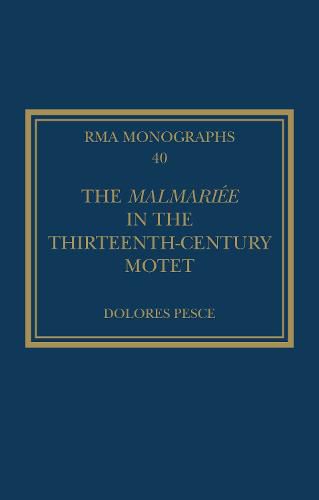Readings Newsletter
Become a Readings Member to make your shopping experience even easier.
Sign in or sign up for free!
You’re not far away from qualifying for FREE standard shipping within Australia
You’ve qualified for FREE standard shipping within Australia
The cart is loading…






This monograph offers a comprehensive study of the topos of the malmariee or the unhappily married woman within the thirteenth-century motet repertory, a vocal genre characterized by several different texts sounding simultaneously over a foundational Latin chant. Part I examines the malmariee motets from three vantage points: (1) in light of contemporaneous canonist views on marriage; (2) to what degree the French malmariee texts in the upper voices treat the messages inherent in the underlying Latin chant through parody and/or allegory; and (3) interactions among upper-voice texts that invite additional interpretations focused on gender issues.
Part II investigates the transmission profile of the motets, as well as of their refrains, revealing not only intertextual refrain usage between the motets and other genres, but also a significant number of shared refrains between malmariee motets and other motets. Part II furthermore offers insights on the chronology of composition within a given intertextual refrain nexus, and examines how a refrain’s meaning can change in a new context. Finally, based on the transmission profile, Part II argues for a lively interest in the topos in the 1270s and 1280s, both through composition of new motets and compilation of earlier ones, with Paris and Arras playing a prominent role.
$9.00 standard shipping within Australia
FREE standard shipping within Australia for orders over $100.00
Express & International shipping calculated at checkout
This monograph offers a comprehensive study of the topos of the malmariee or the unhappily married woman within the thirteenth-century motet repertory, a vocal genre characterized by several different texts sounding simultaneously over a foundational Latin chant. Part I examines the malmariee motets from three vantage points: (1) in light of contemporaneous canonist views on marriage; (2) to what degree the French malmariee texts in the upper voices treat the messages inherent in the underlying Latin chant through parody and/or allegory; and (3) interactions among upper-voice texts that invite additional interpretations focused on gender issues.
Part II investigates the transmission profile of the motets, as well as of their refrains, revealing not only intertextual refrain usage between the motets and other genres, but also a significant number of shared refrains between malmariee motets and other motets. Part II furthermore offers insights on the chronology of composition within a given intertextual refrain nexus, and examines how a refrain’s meaning can change in a new context. Finally, based on the transmission profile, Part II argues for a lively interest in the topos in the 1270s and 1280s, both through composition of new motets and compilation of earlier ones, with Paris and Arras playing a prominent role.